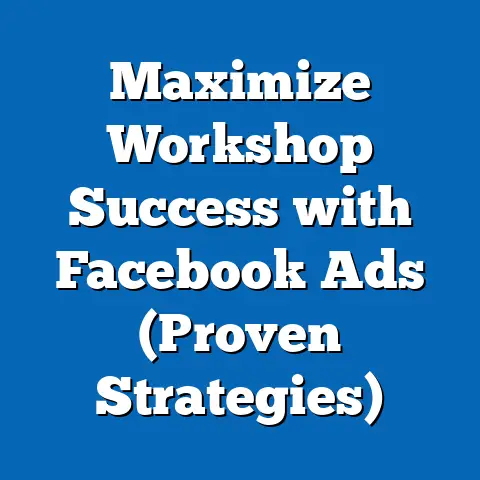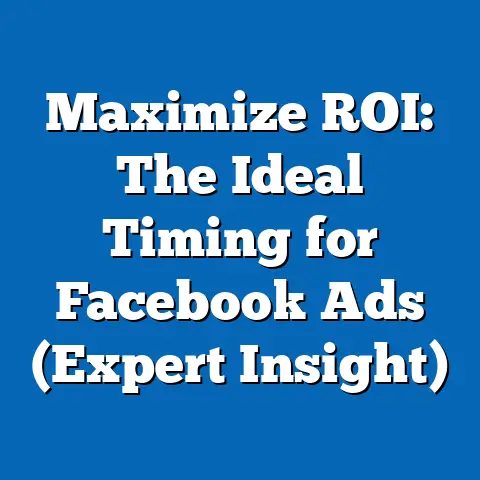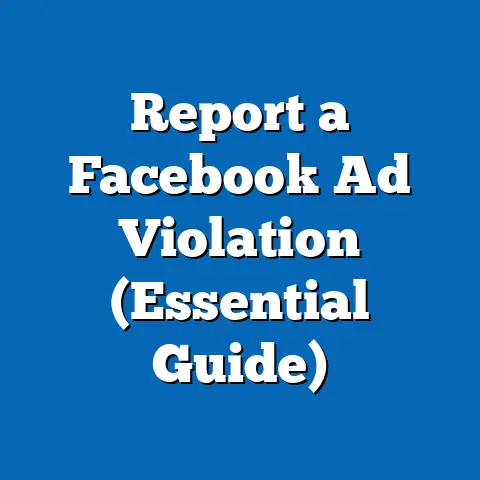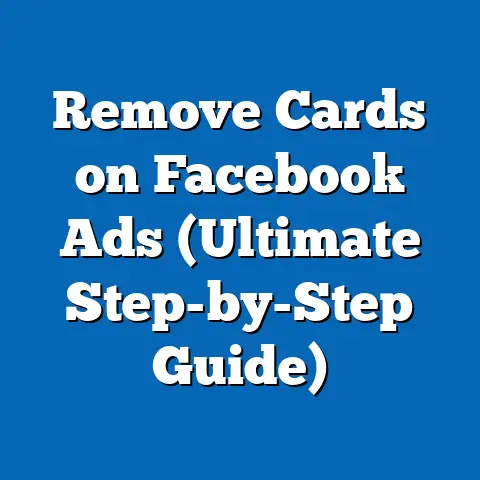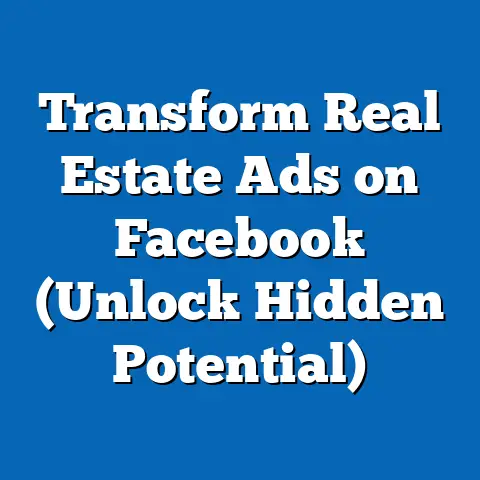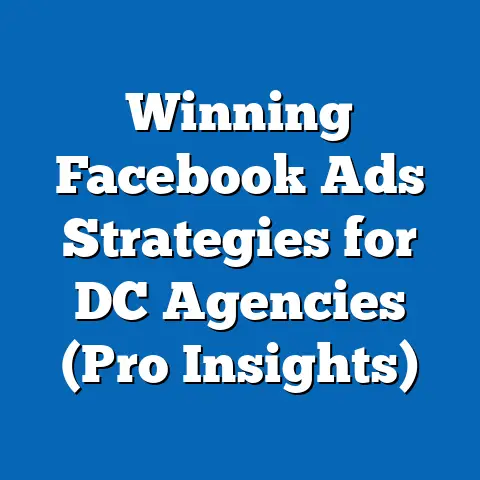Can I Run Facebook Ads for Free? (Free Strategy Unveiled)
We’ve all heard the saying, “Nothing in life is free.” While that’s often true, especially in the world of advertising, the digital landscape is constantly evolving. Just like your car needs regular maintenance to run smoothly, your business needs consistent marketing to stay visible and engaged with your audience. Facebook advertising is a powerful tool, but is it always necessary to spend money to see results? Can you really run Facebook ads for free?
That’s the question I’m going to unravel in this guide. I’ll be sharing my experiences, strategies, and some unique insights to help you navigate the world of Facebook marketing without necessarily breaking the bank.
Understanding Facebook Ads
Before diving into the possibility of “free” ads, let’s establish a solid understanding of what Facebook ads are and how they work.
Overview of Facebook Advertising
Facebook ads are, at their core, targeted messages you pay to display to Facebook users. These ads appear in various places, including the news feed, right column, and even within Messenger. The magic of Facebook advertising lies in its powerful targeting capabilities. I’ve personally used these features to reach incredibly specific demographics, interests, and behaviors, ensuring my message resonates with the right audience. Unlike traditional advertising, Facebook allows you to connect with people who are most likely to be interested in your product or service.
Types of Facebook Ads
Facebook offers a buffet of ad formats to choose from, each designed to achieve different objectives:
- Image Ads: These are the simplest form, featuring a single image with accompanying text. I often use these for quick product announcements or brand awareness campaigns.
- Video Ads: Videos are incredibly engaging and can be used to tell stories, demonstrate product features, or share testimonials. I’ve found video ads to be particularly effective for driving conversions.
- Carousel Ads: This format allows you to showcase multiple images or videos in a single ad, each with its own headline, description, and link. I love using carousel ads to highlight different aspects of a product or service.
- Collection Ads: Designed for mobile, these ads feature a hero image or video followed by a collection of products. It’s a great way to drive sales directly from the ad.
- Lead Ads: Specifically designed to collect leads, these ads feature a form that users can fill out without leaving Facebook. I’ve found them incredibly useful for building email lists and generating qualified leads.
Beyond the format, you also need to consider your advertising objective. Are you trying to increase brand awareness, generate leads, drive traffic to your website, or boost sales? Facebook offers different campaign objectives to align with your specific goals. Choosing the right objective is crucial, as it influences how Facebook optimizes your ad delivery.
Takeaway: Facebook ads are versatile and powerful, but understanding the different formats and objectives is essential for creating effective campaigns.
The Cost of Facebook Ads
Now, let’s address the elephant in the room: the cost. While the promise of “free” is enticing, it’s important to understand how Facebook typically makes money from advertising.
Traditional Payment Models
Facebook primarily operates on two main payment models:
- Cost Per Click (CPC): You pay each time someone clicks on your ad. This is a good option if your goal is to drive traffic to your website or landing page.
- Cost Per Mille (CPM): You pay for every 1,000 impressions your ad receives. This is often used for brand awareness campaigns, where the goal is to get your message in front of as many people as possible.
I’ve used both models extensively, and I’ve found that the best choice depends on your specific goals and budget. If you’re focused on driving conversions, CPC might be more effective. If you’re trying to build brand awareness, CPM could be a better option.
Budgeting for Ads
Setting a budget is a critical step in any Facebook advertising campaign. You can set a daily budget, which is the average amount you’re willing to spend each day, or a lifetime budget, which is the total amount you’re willing to spend over the entire duration of the campaign.
I typically recommend starting with a smaller daily budget to test different ad creatives and targeting options. Once you’ve identified what works best, you can gradually increase your budget to scale your results. It’s also important to monitor your ad performance closely and adjust your budget as needed.
Takeaway: Facebook advertising usually involves spending money, but understanding the payment models and budgeting strategies can help you optimize your ad spend and maximize your ROI.
The Myth of Free Advertising
Okay, let’s get real. The idea of running truly “free” Facebook ads is largely a myth. Facebook is a business, and its primary source of revenue is advertising. That said, there are definitely ways to leverage the platform for promotional purposes without directly paying for ads.
Common Misconceptions
Many people believe they can simply post content on their Facebook page and reach a large audience for free. While organic reach (the number of people who see your content without you paying for it) does exist, it has significantly declined over the years. Facebook’s algorithm prioritizes content from friends and family, which means your business page’s posts are less likely to be seen by your followers.
I’ve seen this firsthand. Years ago, I could post something on a client’s Facebook page and reach a significant portion of their audience organically. Today, that’s simply not the case. To reach the same number of people, you almost always need to boost your post or run a paid ad campaign.
Opportunity Cost
Even if you’re not spending money directly on ads, there’s still an opportunity cost to consider. Time is money, and the time you spend creating content, engaging with your audience, and implementing “free” strategies could be spent on other activities that generate revenue.
It’s important to weigh the potential benefits of these free strategies against the time and effort required. Sometimes, it might be more cost-effective to simply invest in paid advertising and focus your time on other aspects of your business.
Takeaway: While the idea of truly free Facebook ads is a myth, there are strategies you can use to promote your business on the platform without directly paying for advertising. However, you need to consider the opportunity cost and the time investment required.
Strategies for Low-Cost or Free Advertising
Now, let’s explore some strategies you can use to leverage Facebook for promotional purposes without necessarily spending a fortune on ads.
Organic Reach
While organic reach has declined, it’s not entirely dead. You can still increase your organic reach by creating high-quality, engaging content that resonates with your audience. This includes:
- Posting consistently: Regular posting keeps your page top-of-mind and increases the chances of your content being seen.
- Creating visually appealing content: Use high-quality images and videos to capture attention.
- Asking questions and encouraging interaction: Engage your audience by asking questions, running polls, and encouraging comments and shares.
- Using relevant hashtags: Hashtags can help your content be discovered by people who are interested in your industry or niche.
Facebook Groups and Pages can also be powerful tools for building an audience without spending money on ads. I’ve used Facebook Groups to create communities around specific interests or niches, which allows me to connect with potential customers and promote my products or services in a more organic way.
Referral Programs and Promotions
Referral programs and promotions can be incredibly effective for driving word-of-mouth marketing. Encourage your existing customers to refer their friends and family by offering incentives like discounts, free products, or exclusive access to content.
I’ve seen referral programs generate significant results for businesses, especially when they’re well-designed and easy to participate in. Make sure your referral program is clearly explained and easy to share on social media.
User-Generated Content
User-generated content (UGC) is a goldmine for free advertising. Encourage your customers to share their experiences with your products or services on social media. You can then re-share this content on your own Facebook page, giving you authentic testimonials and social proof without having to create the content yourself.
I’ve found that UGC is particularly effective for building trust and credibility. People are more likely to trust recommendations from other customers than they are from the company itself.
Leveraging Facebook Events
Facebook Events are a fantastic way to promote products or services without a direct ad spend. Whether you’re hosting a webinar, a workshop, or a local event, creating a Facebook Event can help you reach a wider audience and generate interest.
I’ve used Facebook Events to promote everything from online courses to in-person workshops. The key is to create an engaging event description, use compelling visuals, and promote the event to your target audience.
Takeaway: There are several strategies you can use to promote your business on Facebook without directly paying for ads. These include maximizing organic reach, implementing referral programs, leveraging user-generated content, and utilizing Facebook Events.
Utilizing Free Tools and Resources
Facebook offers a variety of free tools and resources that can help you optimize your marketing efforts without spending money on ads.
Facebook Insights
Facebook Insights provides valuable data about your audience, including their demographics, interests, and behaviors. This information can help you tailor your content and targeting to better resonate with your audience.
I use Facebook Insights to understand what type of content performs best with my audience, when they’re most active on Facebook, and what other pages they like. This information helps me create more engaging content and optimize my posting schedule.
Creative Tools
Facebook also offers a variety of free creative tools that can help you create engaging ad content. Canva, for example, is a free graphic design tool that allows you to create professional-looking images and videos without any design experience. Facebook also has its own video creation tools that you can use to create short, engaging videos directly within the platform.
I often use Canva to create eye-catching graphics for my Facebook posts and ads. It’s incredibly easy to use, and it allows me to create professional-looking content without having to hire a designer.
Cross-Promotion with Other Platforms
Don’t forget to leverage your other social media platforms to drive traffic to your Facebook page. Share your Facebook content on Twitter, Instagram, LinkedIn, and other platforms to reach a wider audience without spending money on ads.
I often use cross-promotion to drive traffic to my Facebook page from my other social media accounts. For example, I might share a link to my latest Facebook post on Twitter or Instagram.
Takeaway: Facebook offers a variety of free tools and resources that can help you optimize your marketing efforts without spending money on ads. These include Facebook Insights, creative tools, and cross-promotion with other platforms.
Case Studies and Success Stories
To illustrate the potential of these “free” strategies, let’s look at a few real-life examples of businesses that have successfully promoted their products or services on Facebook without relying heavily on paid advertising.
- Local Bakery: A local bakery used Facebook Events to promote their weekly baking classes. They created an engaging event description, shared photos of their delicious baked goods, and encouraged people to RSVP. As a result, their classes were consistently sold out, and they gained a loyal following on Facebook.
- Online Clothing Boutique: An online clothing boutique ran a referral program that offered a discount to customers who referred their friends. The program was easy to participate in, and it generated a significant amount of new customers and sales.
- Fitness Studio: A fitness studio encouraged their members to share their workout photos and videos on social media using a specific hashtag. They then re-shared this content on their Facebook page, creating a sense of community and showcasing the positive results their members were achieving.
These are just a few examples of how businesses can successfully promote their products or services on Facebook without relying heavily on paid advertising. The key is to be creative, engaging, and consistent.
Takeaway: Real-life examples demonstrate that “free” Facebook marketing strategies can be effective when implemented strategically and consistently.
Conclusion
So, can you run Facebook ads for free? The answer is nuanced. While you can’t run traditional paid ads without spending money, you can leverage the platform for promotional purposes using a variety of free strategies. These strategies include maximizing organic reach, implementing referral programs, leveraging user-generated content, utilizing Facebook Events, and utilizing free tools and resources.
The key is to be creative, engaging, and consistent. Don’t expect overnight success. Building a strong presence on Facebook takes time and effort. But with the right strategies and a little bit of patience, you can achieve your marketing goals without breaking the bank.
Think creatively about your marketing approaches and consider integrating the discussed strategies into your own marketing plans. Experiment with different tactics, track your results, and adjust your approach as needed.
Final Thoughts
The world of digital marketing is constantly evolving. What works today might not work tomorrow. But one thing remains constant: the power of innovation. By thinking outside the box and embracing new strategies, you can reduce your advertising costs while still achieving your business goals. Don’t be afraid to experiment, take risks, and challenge the status quo. The possibilities are endless.

